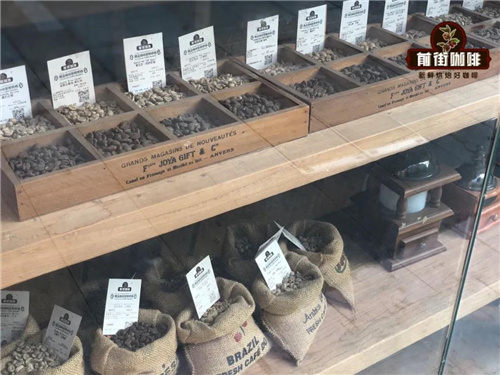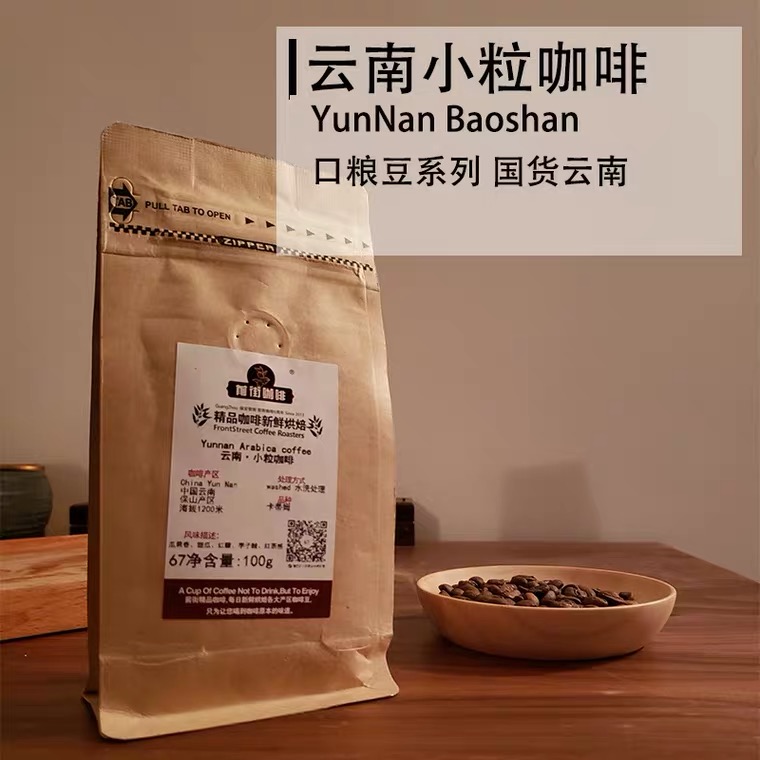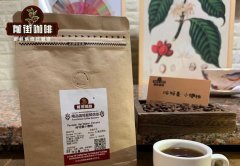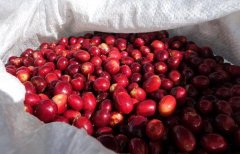Yunnan Sunshine Katim Coffee beans Flavor characteristics and how to flush? The main coffee growing areas in China?
The typical layout of coffee farms in southwestern Yunnan is 5000 coffee trees per hectare, growing in a sunny plantation style. Catimor is the preferred variety for farmers in the region and has been selected for its low susceptibility to disease and higher and faster yields. Farmers use washing and harvesting methods, which in recent years have included mechanical mucus removers.
Yunnan has long been famous for its fertile plateau, which produces some of the most exquisite and delicious teas in China. Now, producers have begun to use these lush green mountains to make rich and complex coffee with soft nutty and honey flavors.
The history of coffee in China is relatively young. French missionaries first planted coffee in the late 19th century, but despite an initiative launched by the government in the 1960s, production has not taken off for nearly 100 years. It was not until 1988 that coffee was commercially developed on a large scale as part of another government-led project with the assistance of the United Nations Development Programme and the World Bank. The vast majority of coffee produced here is commercial; prices over the past decade have been affected by market fluctuations as well as frost and other environmental factors. Although the rate of production is increasing and coffee consumption is becoming more and more popular, a large amount of coffee is still imported into China. Instant coffee is still the largest coffee market segment in China, in which Robusta coffee is widely used. Vietnam is one of the largest producers of robusta coffee in Asia, accounting for more than 50% of China's total coffee imports.
With the continuous growth of the level of production, the level of exports has also increased. The Chinese government has increasingly encouraged companies that export coffee to provide significant incentives thus driving a significant increase in exports. In just 20 years, China's coffee exports increased from 3.48 million kg (1994-1995) to 72 million kg (2013-2014). According to ICO, the vast majority of China's exports are raw raw coffee and only 4 per cent are roasted or soluble products.
Coffee is mainly grown in three regions of China: Yunnan, Fujian and Hainan Island. Fujian and Hainan Island are famous for growing Robusta, accounting for only about 5% of the country's total output. Yunnan dominates other markets, mainly producing Arabica plants. Yunnan Province has increased its diversity by bordering Vietnam, Laos and Myanmar. With an average elevation of 2000 meters, catimor (a Katura-Timor hybrid) is the variety of choice for most farmers because of its high yield, plumpness and resistance to leaf rust.

This paradigm shift from one of the most beautiful agricultural centers in the world has made China a refined and vibrant coffee producer. Producer Li Guangyun and his wife Nano achieved this incredible breakthrough by adopting strict quality control methods and working closely with harvesters to ensure that only ripe and delicious cherries were produced. The resulting cup shows a dynamic honey-like sweetness, balanced with a simple taste of tea and a hint of fruit. The new coffee drinking experience marks a new era of coffee in China.
If slightly roasted, the whole coffee will show a bright citrus flavor, very rich.
Of course, if you want to drink Yunnan beans in Qianjie, there are many choices. Today, I recommend this Katim in Yunnan, which grows at an altitude of 1450-1550 meters and is treated by the sun. The front street is baked in cinnamon, with flavors of nuts, chocolate and spice caramel.

Here are some suggestions for cooking:
Cooking suggestion
Recommended cooking method: hand flushing
Filter cup: KONO filter cup
Water temperature: 87-88C
Amount of powder: 15g
Powder / water ratio: 1:15
Degree of grinding: medium grinding (pass rate of standard sieve No. 20 78%) flushing and cooking method: segmented extraction
Steam with 30 grams of water, the steaming time is about 30 seconds, the small flow center is injected with 95 grams of water around the circle, that is, 125 grams of water is divided into sections, and so the water level drop is about to expose the powder bed, continue to inject water to the end of 225 grams, remove the filter cup when the water level drop is about to expose the powder bed, and (the time of steaming starts) the extraction time is 2 grams 39 percent 00 ".
Important Notice :
前街咖啡 FrontStreet Coffee has moved to new addredd:
FrontStreet Coffee Address: 315,Donghua East Road,GuangZhou
Tel:020 38364473
- Prev

A variety of iron pickup like bean Patch introduces the flavor of Parkmara coffee beans in Hartman Manor, Panama.
Hartman Manor is located in the Balu volcanic area, the soil is rich in nutrients of volcanic soil, towering original trees become the best shade planting environment, shade planting coffee grows slowly, can brew higher sweetness and brighter acidity. The alpine microclimate of Chiriqui Volcan has also become the perfect base for Hartmann coffee.
- Next

Characteristics of slow drying tanned wine with rose summer flavor of Hartmann Manor in Panama?
Panama Hartmann Manor Rose Summer slow drying Sun production area: Ojo de Agua Palo Verde planting altitude: 1400-2000 m varieties: geisha soil species: volcanic soil Classification Standard: SHB treatment: slow drying Sun treatment harvesting method: manual harvesting related Certification: friendly Bird Manor established in: 1912 acreage: 16 hectares Manor size: 110,
Related
- Detailed explanation of Jadeite planting Land in Panamanian Jadeite Manor introduction to the grading system of Jadeite competitive bidding, Red bid, Green bid and Rose Summer
- Story of Coffee planting in Brenka region of Costa Rica Stonehenge Manor anaerobic heavy honey treatment of flavor mouth
- What's on the barrel of Blue Mountain Coffee beans?
- Can American coffee also pull flowers? How to use hot American style to pull out a good-looking pattern?
- Can you make a cold extract with coffee beans? What is the right proportion for cold-extracted coffee formula?
- Indonesian PWN Gold Mandrine Coffee Origin Features Flavor How to Chong? Mandolin coffee is American.
- A brief introduction to the flavor characteristics of Brazilian yellow bourbon coffee beans
- What is the effect of different water quality on the flavor of cold-extracted coffee? What kind of water is best for brewing coffee?
- Why do you think of Rose Summer whenever you mention Panamanian coffee?
- Introduction to the characteristics of authentic blue mountain coffee bean producing areas? What is the CIB Coffee Authority in Jamaica?

